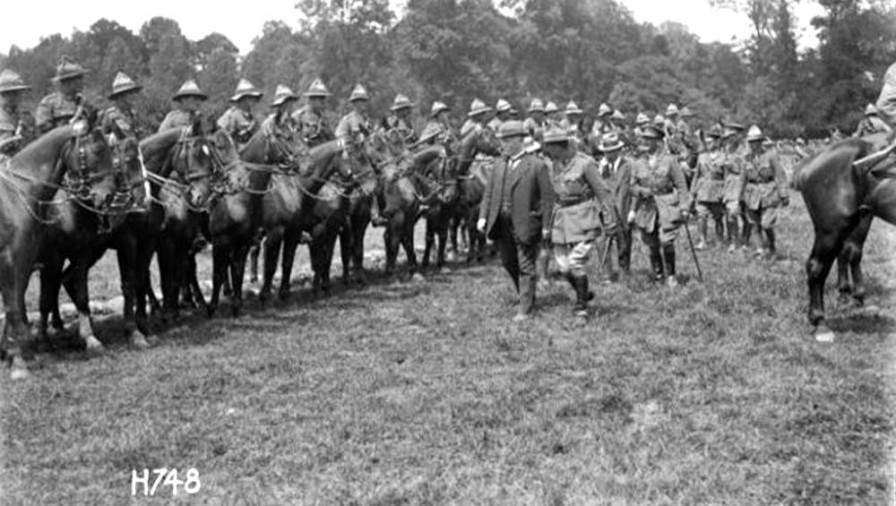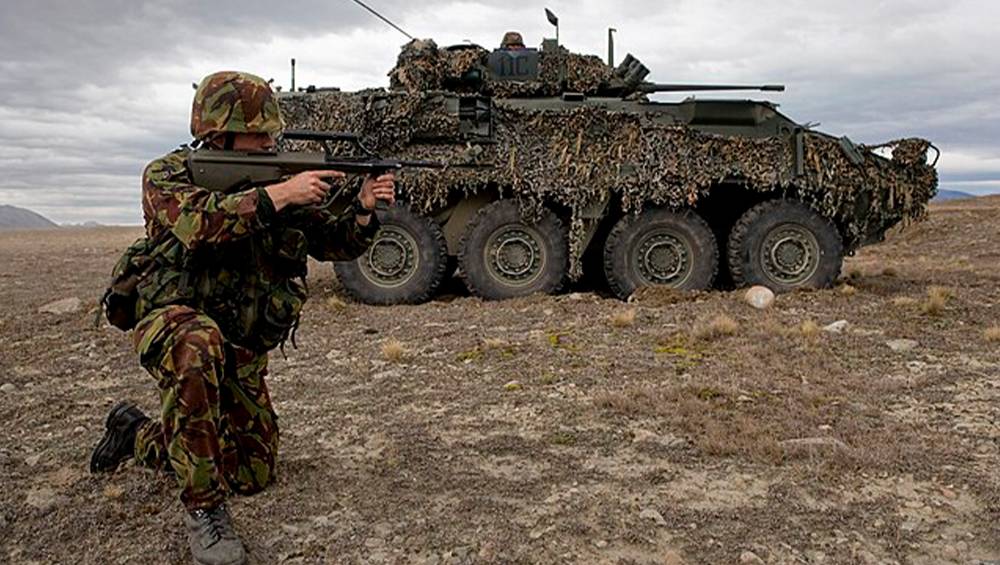Troops on the move: From cavalry to tank warfare
ANALYSIS: The history of the Royal New Zealand Armoured Corps.
WATCH: NBR columnist Nevil Gibson speaks with Calida Stuart-Menteath.
ANALYSIS: The history of the Royal New Zealand Armoured Corps.
WATCH: NBR columnist Nevil Gibson speaks with Calida Stuart-Menteath.
War and its human losses will be in most New Zealanders’ minds this coming week. Anzac Day has had a roller-coaster history since it was inaugurated in 1916 to remember the failed Gallipoli campaign at the start of World War I.
I will not repeat this here as it was fully covered in my review of Rowan Light’s Anzac Nations. Just as the meaning and commemoration of Anzac Day has changed, so has the nature of war and attitudes toward it.
On the global scene, four major conflicts vie for attention – Ukraine, Sudan, Congo, and Gaza. But only the last polarises public opinion here and in the democratic world. The terrorist attack launched by Hamas against Israel on October 7 last year inevitably invited a response borne from the experience of an earlier surprise attack in 1973.
It’s not coincidental that Hamas chose the 50th anniversary of the Yom Kippur war. In their book, Conflict, reviewed here, General David Petraeus and historian Andrew Roberts observe: “Yom Kippur was a reminder that deterrence only works when it threatens overwhelming punishment.”
Yet, more than six months later, that strategy has backfired, at least in the view of western political leaders and much public opinion. They are fuelled by media coverage focused on civilian deaths and the destruction of hospitals, schools, and apartments.
This is the opposite of successful counter-insurgency campaigns, including those previously waged by Israel. Conflict outlines how such efforts must be combined with a population-centric strategy, requiring sizeable conventional forces to “clear, hold, build” in insurgent sanctuaries.
Isis was defeated by use of “overwhelming force”. This has not proved so successful in Gaza, where the popularly elected Hamas had built up significant military capability, including prepared defences, hundreds of kilometres of defensive tunnels, and thousands of rockets.
Its fighters live among the civilian population, making a strategy reliant on targeted raids extremely difficult. History has demonstrated that so-called decapitation strikes against small terrorist groups, such as the Israeli attack on Iran’s consulate in Damascus, cannot defeat an entrenched enemy. Only large-scale conventional land and air power can do that.

Matthew Wright. Credit: NZ Booklovers.
New Zealand’s experience with armoured troops is contained in a new book that traces their activity from 1845 to the present day. Those Who Have the Courage, by distinguished war historian Matthew Wright, is a commissioned work and has the status of an official history of the Royal New Zealand Armoured Corps and its predecessors.
Primarily, it’s a comprehensive record from the early colonial days of mounted riflemen (“the Cavalry”) to the first expeditionary force in South Africa, World War I battles in the Middle East and Europe, and more theatres in World War II. Since then, the armoured corps has been present in many of the world’s trouble spots.
Wright provides dramatic descriptions of these conflicts, with illustrations and excellent maps. But his most valuable contribution is providing a context to a chronological account within a three-part framework that covers both times of war and peace.
The first is the impact of technology, such as the switch from horses to wheeled transport, and the growth of professionalism. In the mid-to-late 19th century, mounted troops carried a lot of social prestige, but they often lacked military expertise. By British standards, the colonial citizen-soldiers “were simply playing at being cavalry”. During the land wars, “The hard realities were driven home repeatedly … notably at Opepe in mid-1869, where troopers lost their lives through their own failure to follow even the most basic military protocols of the day.”
The second framework is the political development of a military force that was influenced by a burgeoning self-confidence in nationhood that was unmatched by performance. The emphasis on volunteers was at odds with attempts by British officers to instil a greater sense of discipline in an age of “social militarism” and the “myth” that New Zealand men were somehow “natural soldiers”. It was not until the 20th century that the Territorial system implemented training standards and based promotion on merit.
The third framework is the wider social and military influences on the resourcing and structure of the defence force, which has always lagged larger countries in capability. These issues have been accentuated in more recent times when political decisions have dictated the scale of spending regardless of perceived threats to peace.
An overall impression from reading the impressive list of engagements over some 160 years, the equipment used, and the outcomes is how much has been achieved with so little. During the land wars, the number of British troops peaked at 9000 regulars, who had use of armoured steam ships on the Waikato River and an effective cavalry from 1864. These soon turned the course of a war against a resourceful enemy employing both guerilla and trench warfare.
The move to an Armed Constabulary did not improve the standards of professionalism with many lives lost on both sides due to what Wright calls a “combination of cultural immaturity and the systemic omissions of period military principles”.
Only mounted troops were sent to South Africa for the second Anglo-Boer war aimed at suppressing the nationalistic aspirations of Afrikaaners, who were also farmer-soldiers. A total of five contingents and 6500 men were sent from New Zealand between 1899 and 1901. The conditions were ideal for cavalry fighting but not for the New Zealand horses.

Otago Mounted Rifles in France, 1918. Credit: Alexander Turnbull Library.
The initial stages of World War I were fought in the Middle East. Mounted troops played a key role in defending the Suez Canal against the Ottomans and an insurrection against British authorities in Egypt. But the Western Front in Europe spelled the end of horses with the advent of armoured tanks. Mechanisation was introduced to the defence force during the 1920s and 1930s, though budgets were small.

The 'Semple Tank' showing its bulldozer origins. Credit: Alexander Turnbull Library.
World War II brought a big change with the local construction and assembly of armoured vehicles, first in 1941 at the Hutt Railway Workshops and later at Hillside in Dunedin. A famous prototype – the “Semple tank” – was developed at the Addington Workshops from a Caterpillar D8. The first Valentine tanks arrived in 1942 from Britain and became a core part of the armoured corps. The tanks were used in the Solomons, but the jungle conditions were not favourable.
The armoured corps saw many successes in the Middle East after the Allied withdrawal from Greece and Crete in 1941. The Long Range Desert Group in North Africa was disbanded at the end of 1943 as attention turned to the invasion of Sicily. The armoured corps had its greatest successes in two winters before arriving at Trieste to avoid it being captured by communist Yugoslav partisans. In a 350km thrust through northeastern Italy, New Zealand’s 4 Armoured Brigade broke through three German divisions and took nearly 50,000 prisoners in its most rapid offensive to date.
The armoured corps earned the right to put “Royal” in its title in 1947, and welcomed the first of its Centurion tanks, then the world’s heaviest. But the late 1950s and early 1960s were “difficult years”, according to Wright, as defence spending fell to 2.5% of GDP and the defence force lacked all forms of vehicles. A major purchase of nearly 100 main tanks fell through but eventually it had a fleet of Walker Bulldogs and M113A1 “battlefield taxis” with machine guns.

LAV III in exercise at Tekapo Military Camp. Credit: NZ Defence Force.
Other purchases included Alvis FV-101 Scorpions in 1980 but the biggest controversy in recent years was the 1999 decision by the Labour government to buy 105 LAV (light armoured vehicle) IIIs from Canada. This ended the use of tank operations as “both unaffordable and politically unpalatable”, Wright observes. In future, New Zealand’s participation in future wars would depend on others for heavy armour, a fate that also befell the air force’s strike arm.
The glory days of the tank victory in Italy consolidated the strong sense of identity of the RNZAC, which now faces a future in which its historic role is constrained. But its legacy won’t be easily forgotten in this weighty (2.5kg) coffee-table sized memorial of more than 600 pages. A third of these are devoted to appendices, sources, bibliography, and index.
Those Who Have the Courage: The history of the Royal New Zealand Armoured Corps and predecessor forces, by Matthew Wright (Oratia Books).
Nevil Gibson is a former editor at large for NBR. He has contributed film and book reviews to various publications.
This is supplied content and not paid for by NBR.